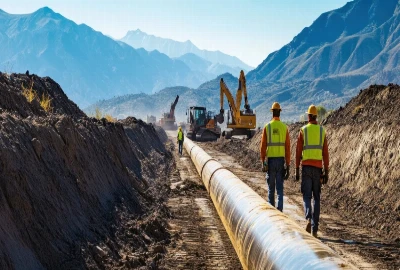Entertainment & Sustainability: Green Sets, Carbon Neutral Shows & Eco‑Storytelling

The entertainment industry has always been a mirror to society, shaping cultural values and reflecting pressing issues of the times. Today, one of the most urgent topics is climate change, and the industry is finally stepping up to embrace entertainment & sustainability. From green sets and waste-free productions to eco-storytelling that raises awareness about environmental issues, Hollywood, streaming platforms, and global studios are rethinking how they create and share content.
The move toward sustainable entertainment isn’t just about optics. The carbon footprint of film and television production is massive. Studies have shown that a single blockbuster can produce as much as 3,000 metric tons of CO₂ emissions. Audiences, especially Gen Z and millennials, are also more likely to support brands and media companies that show real commitment to sustainability. The intersection of entertainment and sustainability is no longer a niche—it’s quickly becoming the future standard.
Green Sets: Building Sustainability Behind the Scenes

Behind the glitz and glamour of the screen, set production is one of the most resource-intensive aspects of filmmaking. Green sets are now a rising solution.
Eco-friendly set design
Traditional sets often involve disposable props, single-use plastics, and massive energy consumption. Green sets, however, use sustainable materials, modular designs, and recycled resources. For example, studios now use reclaimed wood, eco-paints, and modular furniture that can be repurposed for future productions.
Energy efficiency on set
Lighting and power are major sources of energy drain in productions. The shift toward LED lighting, solar panels, and hybrid power generators is cutting energy waste significantly. Studios like Warner Bros. and Netflix have introduced energy-saving initiatives that show how eco-friendly solutions can also reduce costs.
Reducing waste and water use
Green sets also involve waste reduction programs—recycling, composting, and digital props to reduce physical builds. Productions have also introduced water-saving techniques such as closed-loop systems for water effects. These changes showcase how eco-conscious practices are not only possible but also scalable across productions.
Carbon Neutral Shows: Redefining the Production Standard

While green sets focus on physical design, carbon neutrality addresses the larger environmental footprint of entertainment.
Measuring and offsetting emissions
Studios are now partnering with climate organizations to measure carbon footprints, covering everything from transportation to catering. To achieve neutrality, productions invest in carbon offsets, supporting reforestation projects or renewable energy initiatives that balance out their emissions.
Travel and transportation changes
Travel is one of the largest contributors to production emissions. More shows are adopting virtual production techniques that reduce the need for large crew travel, using digital backdrops and LED walls. Local hiring and reduced air travel also contribute significantly to carbon neutrality.
Industry examples of carbon neutral shows
Popular productions like The Crown and Bridgerton have committed to more sustainable production practices. Netflix and BBC Studios have pledged to make their productions carbon neutral, proving that large-scale change is possible across big-budget projects. These shifts set new expectations for the future of television and film.
Eco-Storytelling: Shaping Audience Awareness

Beyond production, the stories themselves play a key role in addressing sustainability. Eco-storytelling is about weaving environmental consciousness into narratives, inspiring audiences to care about climate change.
Subtle integration of sustainability themes
Not every show has to be a documentary about climate change. Many productions now integrate eco-friendly behaviors into character storylines—whether it’s showing recycling, using public transportation, or living sustainably. These small details normalize green living.
Documentaries and issue-driven content
Environmental documentaries like Our Planet and Seaspiracy highlight urgent ecological issues, reaching millions of global viewers. These productions don’t just inform—they inspire activism and push governments and corporations toward accountability.
Fictional storytelling with eco-focus
Sci-fi and drama series are also using environmental crises as central plotlines. Films like Don’t Look Up and shows like Extrapolations use fictional storytelling to mirror real-world environmental challenges, sparking conversations and driving cultural shifts toward climate awareness.
The Role of Streaming Platforms in Sustainable Entertainment

Streaming platforms are not just distributors—they’re leading the charge in sustainable entertainment practices.
Sustainable production commitments
Netflix, Amazon Prime, Disney+, and Apple TV+ have all set public goals to reduce emissions and achieve carbon neutrality. Their scale gives them the ability to set new industry standards and pressure traditional studios to follow suit.
Green content libraries
Streaming services also play a role in promoting eco-storytelling by curating climate-focused documentaries and films. These libraries give audiences easy access to educational content, ensuring environmental issues remain part of mainstream conversation.
Technology reducing footprints
Cloud-based editing, digital workflows, and virtual production stages are reducing the environmental impact of media creation. By shifting to data-driven, remote-friendly production models, streaming companies are cutting unnecessary travel and physical resource waste.
Industry Challenges and the Road Ahead

While the entertainment industry has made significant progress in sustainability, challenges remain.
Balancing costs and eco-goals
Implementing green technologies and sustainable practices often comes with higher upfront costs. Smaller productions may struggle to adopt eco-friendly methods without financial support. Incentives, tax breaks, and industry-wide collaboration are needed to make sustainability accessible for all.
Avoiding greenwashing
As sustainability becomes a trend, the risk of greenwashing—making claims without meaningful change—grows. Audiences are savvy and demand transparency. Studios must provide clear reporting and certifications to prove their commitment to sustainability.
Audience demand driving change
Ultimately, the industry’s shift depends on audience expectations. As more viewers demand sustainable practices and eco-conscious storytelling, studios will face cultural and financial pressure to prioritize sustainability in entertainment.




